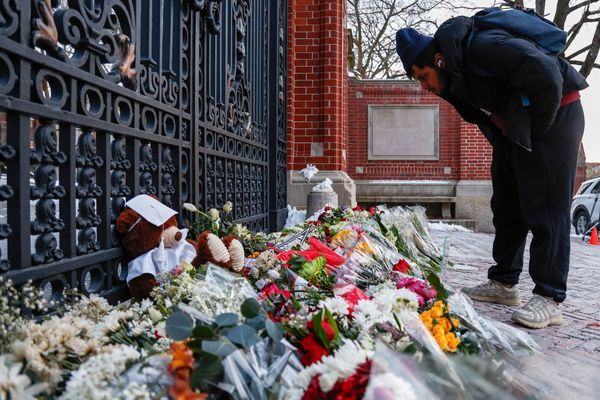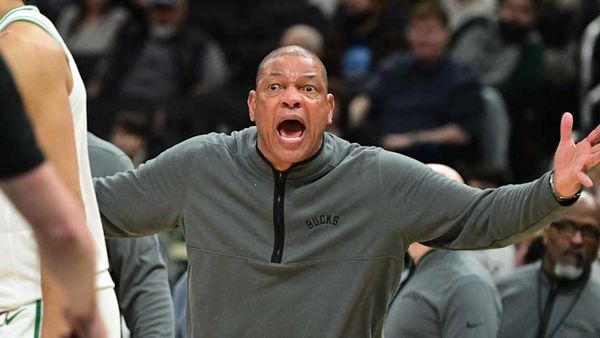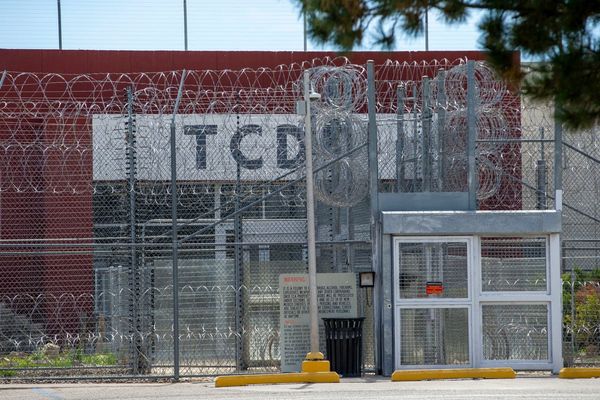

The phrase ‘slip, slop, slap’ probably lives in your brain rent-free when it comes to sun protection, but even if you’re the most rigorous skincare girlie out there, new research suggests your sunscreen might not be shielding you as much as you think.
CHOICE, the country’s peak consumer advocacy group, put 20 SPF50 and SPF50+ sunscreens to the test at an independent accredited lab. The results? Well, most didn’t actually hit the SPF50 mark.
Four products returned SPF results in the 40s, four dropped down into the 30s, and seven landed in the 20s.
“Of the 20 sunscreens we tested, only four products actually met their SPF 50 or 50+ claims,” said CHOICE chief Ashley de Silva in a statement on Thursday.
“Consumers expect sunscreen to protect them in line with the SPF rating on the product, but as our testing has shown, the SPF label doesn’t always match what’s in the bottle.”

The tests on 10 volunteers involved putting sunscreen on their skin, exposing that skin to a solar simulator (which replicates the effects of the sun) and analysing the results. The same process was then done on unprotected skin to compare results.
Now, CHOICE was quick to caution that this doesn’t mean sunscreen doesn’t work (so don’t go off on a dramatic spring clean just yet!) but they did say the results are pretty “disappointing” given Australia’s rep for having some of the best sunscreen standards in the world.
“It’s important to highlight that this testing does not mean sunscreen doesn’t work. While some specific sunscreens did not meet their claimed SPF, a sunscreen with an SPF of 30 or even 20 still offers a significant amount of sunscreen protection, and any sunscreen is better than none at all,” de Silva said.
CHOICE director of testing Matthew Steen told ABC News that while there was “always variability in testing”, there was a “stark” difference between what brands advertised on their products and what CHOICE testing found.
Let’s dive into CHOICE’s findings.
So, who got the Razzies of Aussie sunscreens?
The worst performer was Ultra Violette’s Lean Screen SPF50+ Mattifying Zinc Sunscreen, which returned an SPF rating of four, according to CHOICE’s testing. (Not me doing a double-take on that one.)
The results were so shockingly low, de Silva explained, that they even decided to test a different batch at a different lab in Germany to verify the results.
“Those tests found the product had an SPF of five — an almost identical result to our initial testing,” he said.
However, Ultra Violette has refused to accept the results as “even remotely accurate”, saying it contradicts its own testing and could well be the result of human error.

“There is also the question as to whether the product was appropriately decanted and labelled correctly for this blind testing – as stated in the ARTG guidelines – and done so in a GMP (Good Manufacturing Practice) facility,” a spokesperson told PEDESTRIAN.TV.
Ultra Violette said its own testing of Lean Screen in 2021 returned a result of 64.32, well above the threshold to make a SPF 50+ claim. A separate test revealed a PA ++++ rating, the highest possible score for UVA protection.
“We rigorously retest our entire SPF range every two years. Lean Screen has been on the market for 5 years in 29 countries and we have not received a single substantiated claim of sunburn during use – reinforcing our confidence in the testing we have,” the spokesperson continued.
In response to the Choice testing, Ultra Violette said it initiated an “urgent” 10 person test with the same batch of sunscreen, returning results of 61.7.
“Lean Screen was not identified in any supporting documentation from both Choice tests, therefore there is no guarantee that these test results are indeed reflective of this product. Due to the blind nature of this test, human error and the mix up of samples is a highly probable scenario,” the spokesperson said. (The full statement, in addition to the test results, are available online.)

Four of the sunscreens tested were sitting in the 40s range, falling just short of the SPF50 claim. These were:
- Coles SPF 50+ Sunscreen Ultra Tube, which tested at 43
- Nivea Sun Kids Ultra Protect and Play Sunscreen Lotion SPF 50+, which tested at 41
- Nivea Sun Protect and Moisture Lock SPF 50+ Sunscreen, which tested at 40
- Sun Bum Premium Moisturising Sunscreen Lotion 50+, which tested at 40
In a statement to PEDESTRIAN.TV, a spokesperson for Coles said independent test reports provided by its supplier verified the product complies with relevant sunscreen standards and its label claims. However, it has since commissioned further independent testing to further review these results.
Another four sunscreens were found to have sun protection factors in the 30s. These were:
- Banana Boat SPF50+ Sunscreen Lotion, which tested at 35
- Bondi Sands SPF50+ Fragrance Free Sunscreen, which tested at 32
- Cancer Council Kids Clear Zinc 50+, which tested at 33
- Invisible Zinc Face + Body Mineral Sunscreen SPF 50, which tested at 38
While the Cancer Council was “concerned” by CHOICE’s findings, it said it had SPF test results for each product that comply with their labelled rating. However, a spokesperson told PEDESTRIAN.TV that “out of an abundance of caution”, they’re submitting the products for further testing.
“Australia has the highest rate of skin cancer in the world, with two in three Australians diagnosed in their lifetime. It is vital that consumers can have confidence in the sun protection factor of their sunscreen, which is one of the five essential forms of sun protection,” it told PEDESTRIAN.TV in a statement.

There were a considerable seven (!!) products in CHOICE’s testing that returned results in the 20s, which is around half of what’s mentioned on the bottle. These were:
- Aldi Ombra Everyday Sunscreen Lotion 50+, which tested at 26
- Banana Boat Baby Zinc Sunscreen Lotion SPF 50+, which tested at 28
- Bondi Sands SPF 50+ Zinc Mineral Body Lotion, which tested at 26
- Cancer Council Everyday Value Sunscreen 50, which tested at 27
- Cancer Council Ultra Sunscreen 50+, which tested at 24
- Neutrogena Sheer Zinc Dry-Touch Lotion SPF 50, which tested at 24
- Woolworths Sunscreen Everyday Tube SPF 50+, which tested at 27
A spokesperson for Edgewell Personal Care — which owns Banana Boat — said the company firmly stands by its SPF claims.
“Independent test results show that the Banana Boat sunscreens tested by CHOICE not only meet but exceed the SPF 50+ claim,” it said.
A Neutrogena spokesperson stated the company’s product range “complies with all relevant Australian standards and regulatory requirement” and backed its label claim.
PEDESTRIAN.TV has reached out to the brands mentioned in the study for further comment.
Which were the best performing sunscreens?
The four sunscreens that did met their SPF claims, according to Choice’s testing, were:
- La Roche-Posay Anthelios Wet Skin Sunscreen SPF 50+, which tested at 72;
- Neutrogena Ultra Sheer Body Lotion SPF 50, which tested at 56;
- Cancer Council Kid Sunscreen 50+, which tested at 52;
- Mecca Cosmetica To Save Body SPF 50+ Hydrating Sunscreen, which tested at 51.
Still, the surprising number of sunscreens that didn’t pass the testing has spurred calls for the regulatory Therapeutic Goods Administration (TGA) and consumer watchdog Australian Competition and Consumer Commission (ACCC) to carry out their own compliance testing.
CHOICE noted the TGA relies on manufacturers’ reports on the efficacy and quality of the products, and has urged the ACCC to investigate if consumers are being misled.
“Sunscreens are a vital tool in the fight against skin cancer and sun damage,” CHOICE senior campaigns and policy adviser Rafi Alam said in a statement.
“Millions of Australians rely on SPF ratings to understand the protection they’re paying for, and expect these ratings to be as accurate as possible.”
The TGA said in a statement it is investigating Choice’s findings and “will take regulatory action as required”.
An ACCC spokesperson told PEDESTRIAN.TV it is aware of the report and is considering the issues in accordance with our Compliance and Enforcement Policy.
“The ACCC will engage closely with the TGA in considering the allegations,” they said.
Remember: sunscreen is still a vital part of sun protection, especially for anyone living under the big Aussie sun. Don’t go throwing that bottle out just yet.
The post Only 4 Of 20 Popular Aussie Sunscreens Are Meeting The SPF Claims On Their Label, According To CHOICE appeared first on PEDESTRIAN.TV .







